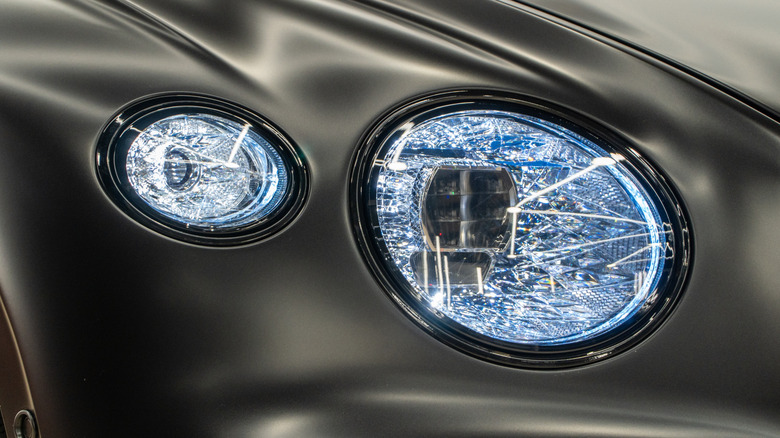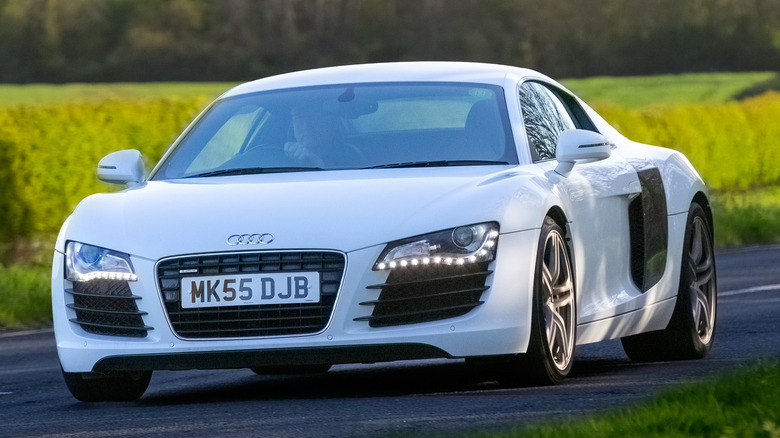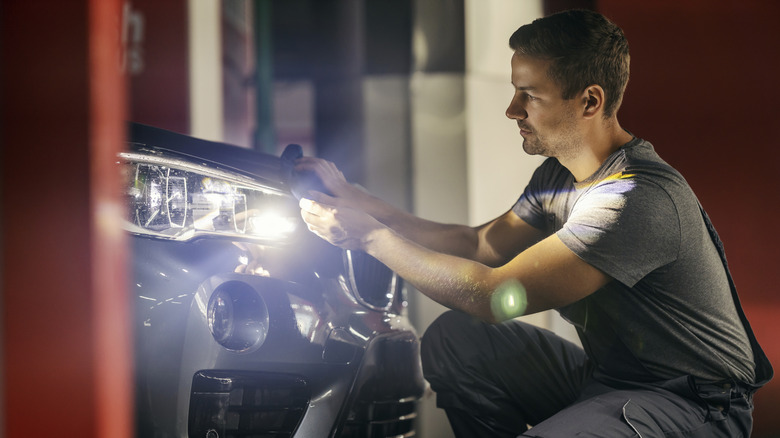Adaptive Headlights Used To Be Illegal In The US - Here's Why
Back in 2008, Audi introduced the R8, the first production car to feature LED headlight technology. In 2013, Audi also pioneered adaptive beam (ADB) headlights with the A8, and in 2014, BMW launched laser headlights as an option with the BMW i8. All three of these innovations marked major breakthroughs in the world of automotive lighting, yet not all of them have been equally adopted throughout the auto industry. BMW has since stopped using laser headlights on its cars, and while LED headlights have been the standard for over a decade, adaptive headlights have just recently become legal in the U.S., at least on paper.
In 2022, the National Highway Traffic Safety Administration (NHTSA) finally allowed the use of adaptive headlights on upcoming vehicles in an effort to increase safety for pedestrians, cyclists, and drivers, but not in the same way adaptive headlights have been used in Europe, Asia, and Canada. This means that even though this technology has been on the market for a while, it was outright illegal in the U.S. until 2022 due to outdated regulations.
Why were adaptive headlights illegal in the U.S.?
ABD headlights were illegal in the U.S. due to a regulation that was originally written in the 1960s, more specifically, the Federal Motor Vehicle Safety Standard 108. The standard stated that vehicles could only have two standardized beam patterns, low beams or high beams. This also means that the option to dynamically blend or combine both was not possible. Since adaptive, or matrix, headlights work by effectively blending high beams with low beams at the same time, they were automatically non-compliant.
The rule also required the light beam to remain consistent in both low beam and high beam modes, which adaptive headlights don't do since their whole purpose is to offer an adaptive beam that changes in both length and width depending on the traffic. For years, automakers and the Insurance Institute for Highway Safety petitioned NHTSA for a revision, and in 2022, thanks to a mandate in the Bipartisan Infrastructure Law, the rule was finally amended. However, many still believe that the amendment didn't do enough to practically allow the use of adaptive headlights in the U.S. since its standards are vastly different from those used in Canadian, Asian, and European markets.
Why U.S. adaptive headlight rules differ
The amended rule 108 sets a high benchmark of compliance for ADB headlights since it requires very tight glare limits, sharp light cutouts, and a rapid response when the system detects traffic. These and many other photometric limits are much more complicated than what the current systems used in Europe, Canada, and Asia have.
In an interview with CNN, Michael Larsen, Technical Fellow for Exterior Lighting at General Motors and a member of the SAE's lighting committee, said, "But when everyone started really looking at this complicated regulation, you just couldn't get there from here." This means that even though most automakers already have all of the necessary hardware installed in existing cars sold in the U.S. for ADB headlights, they can't just do a software update and enable them since compliance requires changes to hardware. However, NHTSA does state that some ADB systems simply don't do enough to prevent the systems from causing too much glare and thus put too much light in the eyes of other drivers.
It's also worth noting that the maximum brightness level of LED headlights in Europe is 450,000 candela, while in the U.S., it's 150,000 candela, and it seems like modern headlights are only becoming brighter. However, because adaptive lights are a mainstay in many European cars, even a higher candela count does not usually translate to more glare because adaptive headlights dynamically adjust the beam to project light only where there are no vehicles or pedestrians. Currently, the differences in standards are so significant that the chances of automakers offering adaptive beam headlights in the U.S. using their existing systems remain low.


